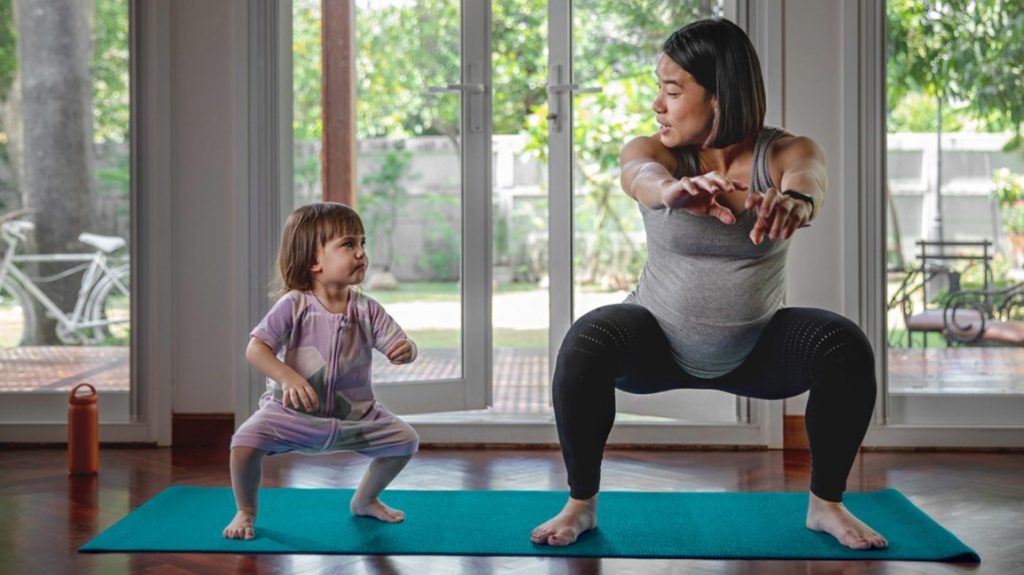Exercising during pregnancy can be helpful for a woman’s mental and physical health, and it can as well provide the newborn with a healthier beginning. Frequent exercise during pregnancy can enhance your posture and lessen some common distress such as backaches and fatigue. There are proven facts that physical activity may curb gestational diabetes (diabetes that develops during pregnancy), alleviate stress, and generate more strength needed for labour and delivery.
Regardless of the benefits of exercising, and doctor’s recommendations, only 40% of pregnant women exercise in a recent meta-analysis that included 2,000 pregnant women.
Recent guidelines from the United States Department of Health and Human Services Physical Activity Guidelines for Americans, suggest a minimum of 150 minutes a week of moderate-intensity aerobic physical activity, both during and after pregnancy.
An exercise slot does not need to be lengthy. Women can, for example, exercise five times a week for 30 minutes or 10 times a week for 15 minutes.
In this article, you would find five physical activity that you could do that has minimal risk of injury, benefit the entire body and are often safe to carry out until delivery.
- Taking A Quick Walk
Taking a quick stroll around the neighbourhood is a simple exercise that can make a lot of difference for you and the baby. It is helpful for the heart and has an insignificant effect on the knees and ankles, plus, it is free.
Friends and other family members can join for company.
Caution: Ensure your safety by choosing smooth surfaces, putting on supporting footwear to prevent falls, stay clear of potholes, stones, and other hurdles.
- Swimming
Swimming enables motion without mounting pressure on the joints. Buoyancy may contribute to some relief from the additional bodyweight as the pregnancy advances.
It is crucial to opt for a stroke that feels relaxing and does not hurt or ache the neck, shoulders, or back muscles. Breaststroke may be a fair option for this. Using a kickboard can help bolster the leg and buttock muscles.
Caution: Use the railing for support when entering the water to prevent slipping. Do not dive or jump into the water. This could strain the abdomen. Do not use warm pools, steam rooms, and hot tubs, to reduce the risk of overheating.
- Spinning
Cycling on a stationary bike, is a safe exercise that any pregnant woman can do, whether you were an athlete or even a first-timer.
Cycling boosts heart rate while reducing stress on the joints and pelvis, with the bike supporting the body weight. Since the bike is static, the risk of falling is low.
Later in pregnancy, a higher handlebar may be more comfortable.
- Yoga
Prenatal yoga lessons can enable women to keep their joints limber and enhance flexibility.
The research carried out on 70 pregnant women in Iran, it proved that yoga may help relieve pain and stress, strengthen the muscles, promote blood circulation, help keep high blood pressure at bay, boost flexibility, and also improve relaxation.
Caution: As pregnancy progresses, consider avoiding poses that: may require you to overstretch, including lying on the abdomen, and involves lying flat on the back for longer periods.
When lying flat on the back, the weight of the bump can put pressure on major veins and arteries and decrease blood flow to the heart. This reduced blood flow can lead to faintness.
- Squatting and pelvic tilts
Some exercises are particularly useful during pregnancy, as they prepare the body for labour and delivery.
Squatting may help open the pelvis during labour. Pelvic tilts can build up the abdominal muscles and help relieve backache.
Regular exercise can improve the health of both the mother and the baby, and it may make pregnancy, labour, and post-delivery recovery easier. Hence, it is important that women begin a pregnancy program to enhance the outcome of their pregnancies. Nevertheless, it is vital to stay safe during exercise, so women should meet with their doctor before making any changes as their pregnancy advances.





Comments are closed.